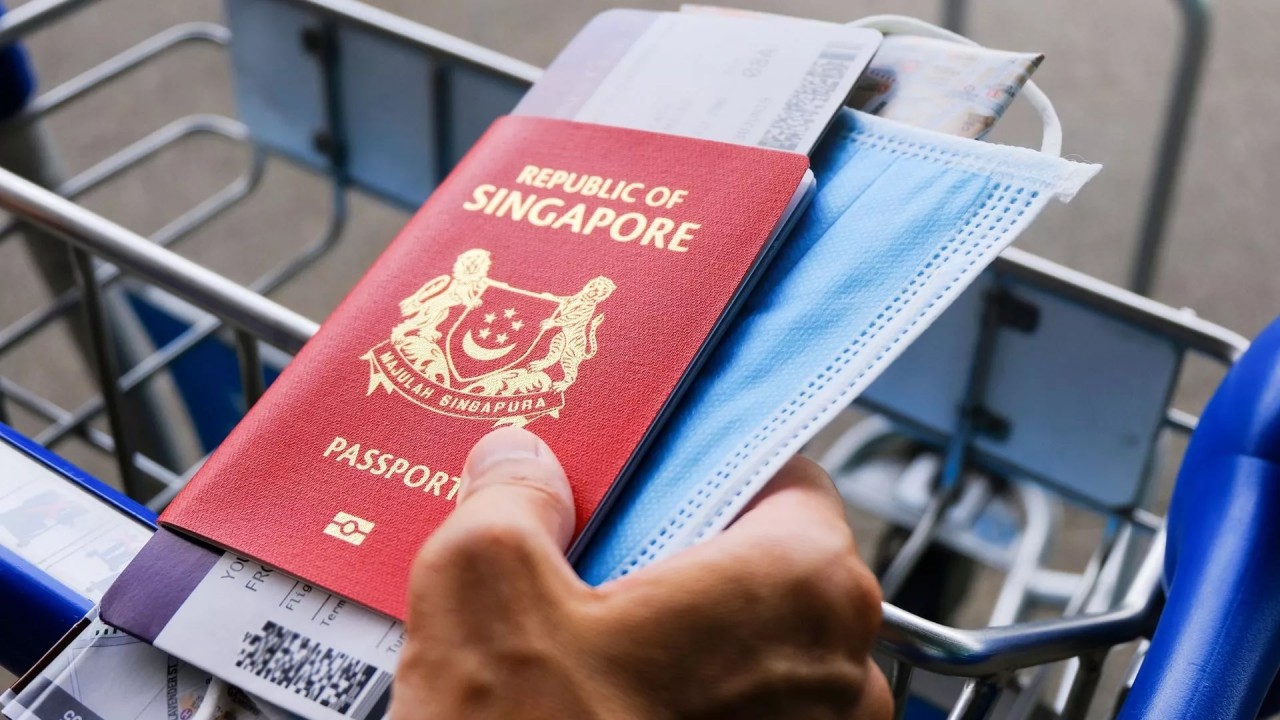Exploring Hwaseong Fortress: A must-visit UNESCO World Heritage site in Suwon
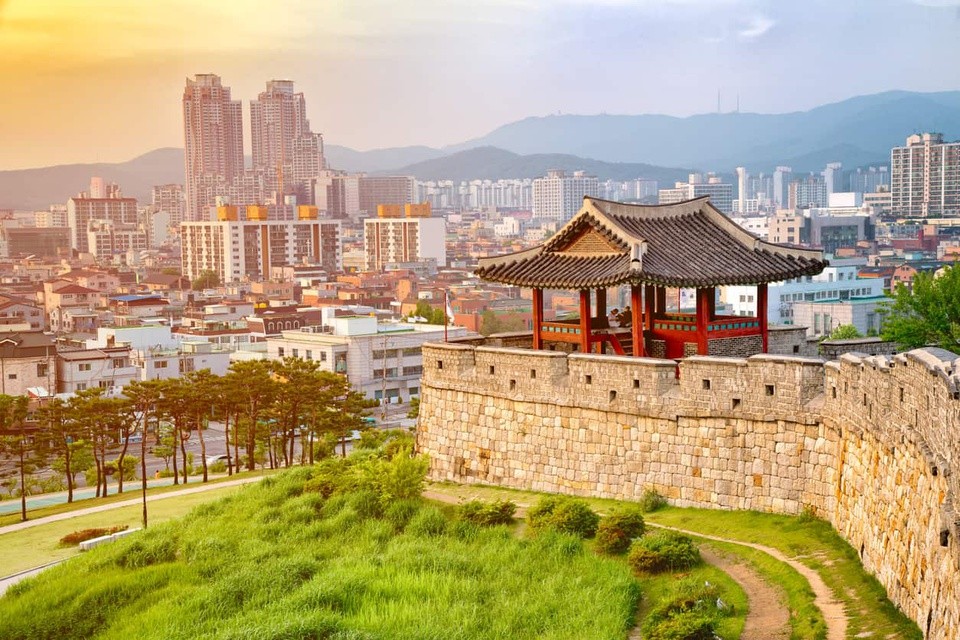 |
| Photo: seoulkorea |
Suwon was one of four main regional government centers during the Joseon dynasty. Hwaseong Fortress, built to protect the city, was designated as a UNESCO World Cultural Heritage Site on December 12, 1997 for its historical value. The fortress offers various performances daily as well as the Suwon Hwaseong Cultural Festival every fall. The walls stretch for 5.7 kilometers, with Paldalsan Mountain at the center. The fortress, constructed from 1794 to 1796, was built as a display of King Jeongjo’s filial piety towards his father and to build a new pioneer city with its own economic power.
Suwon’s landmark and UNESCO World Heritage site, Hwaseong Fortress, is a prime example of Joseon Dynasty-era (1391-1897) architecture and the centerpiece of the city’s history.
Destroyed during Japanese colonial rule and during the Korean War, the fortress was restored to its original condition in the 1970s thanks to royal books dating back to 1796 showing the original construction methods.
Unlike many other ancient fortresses, Hwaseong Fortress has numerous structures and double walls which once allowed guards to stop attacks from the outer wall. Experts say the fortress construction is still standing due to the advances in architecture during the Joseon Dynasty.
A must-visit UNESCO World Heritage site
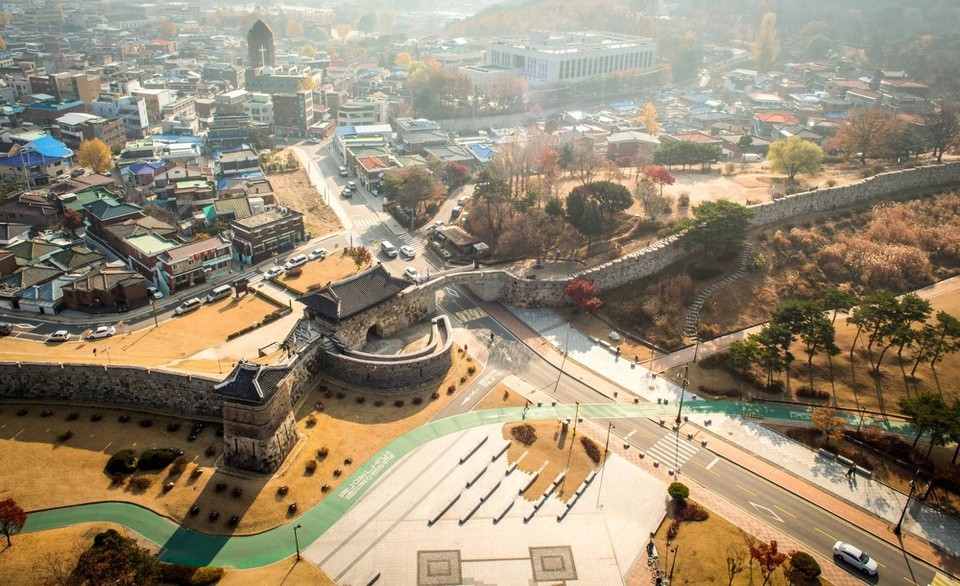 |
| Photo: Kim's Travel |
Hwaseong is a piled-stone and brick fortress of the Joseon Dynasty that surrounds the centre of Suwon City, of Gyeonggi-do Province. It was built in the late 18th century by King Jeongjo for defensive purposes, to form a new political basis and to house the remains of his father, Crown Prince Jangheon. The massive walls of the fortress, which are 5.74 km in length, enclose an area of 130 ha and follow the topography of the land. The Suwoncheon, the main stream in Suwon, flows through the centre of the fortress, according to UNESCO.
The walls incorporate a number of defensive features, most of which are intact. These include floodgates, observation towers, command posts, multiple arrow launcher towers, firearm bastions, angle towers, secret gates, beacon towers, bastions and bunkers. There are four main gates at the cardinal points. The Paldalmun Gate in the south and the Janganmun Gate in the north are impressive two-storey wooden structures on stone bases, flanked by gated platforms and shielded by half-moon ravelins built of fired brick. They are linked to the main road running through the complex. The west (Hwaseomun) and east (Changnyongmun) gates are single-storey structures, also protected by ravelins.
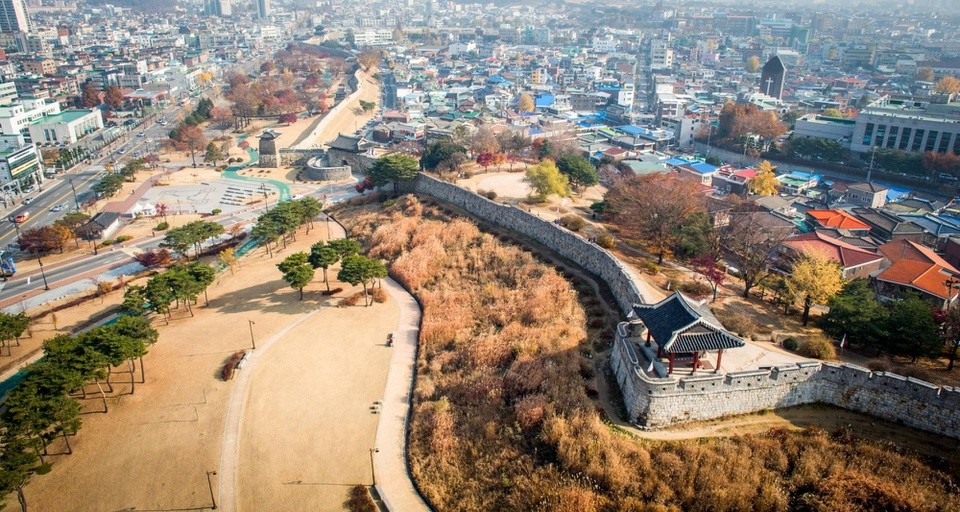 |
| Photo: Expedia |
The Hwaseong Fortress has had a great influence on the development of Korean architecture, urban planning, and landscaping and related arts. It differed from the fortresses in China and Japan in that it combined military, political and commercial functions. Its design by Jeong Yakyong, a leading scholar of the School of Practical Learning, was characterized by careful planning, the combination of residential and defensive features, and the application of the latest scientific knowledge. It represents the pinnacle of 18th century military architecture, incorporating ideas from some of the best examples in Europe and East Asia. Hwaseong is also unique in that it covers both flat and hilly land, making use of the terrain for maximum defensive efficacy.
A completion report for the building of Hwaseong Fortress, Hwaseong seongyeok uigwe, was published in 1801, which provides the details and particulars about its design and construction process.
Hwaseong Fortress represents the pinnacle of 18th century military architecture, incorporating the best scientific ideas from Europe and East Asia brought together through careful study by scholars from the School of Practical Learning. It demonstrates important developments in construction and the use of materials that reflects the interchange of scientific and technical achievements between the East and West. The fortress had a great influence on the development of Korean architecture, urban planning, and landscaping and related arts.
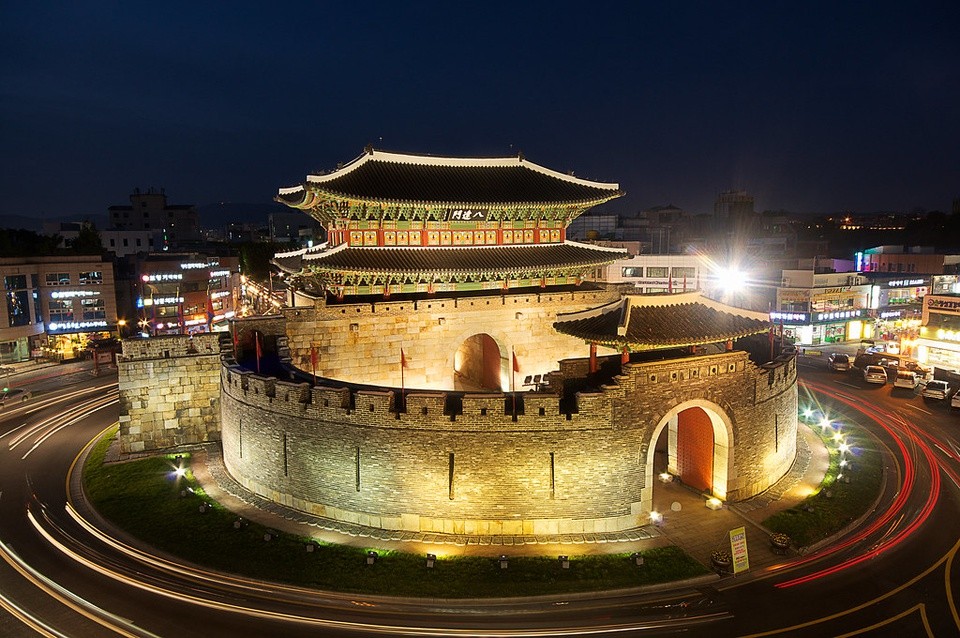 |
| Photo: seoulkorea |
Hwaseong combined traditional fortress building methods with an innovative site layout that enabled it to deliver defensive, administrative and commercial functions. Hwaseong is a testimony to the rapid social and technical developments of 18th century of Korea.
The flower among fortresses, the flower of the Joseon dynasty
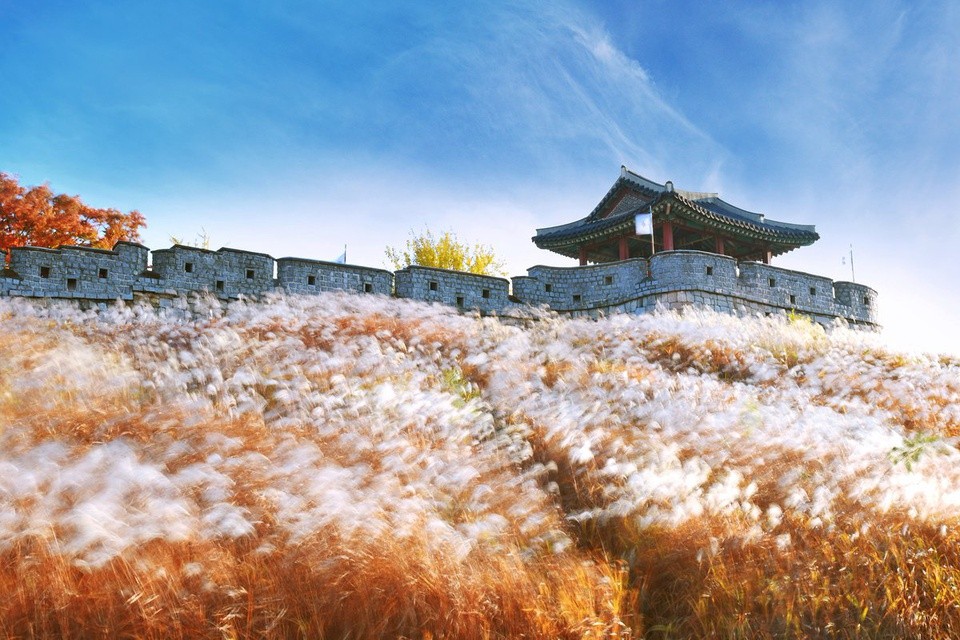 |
| Photo: dreamstime |
The Suwon Hwaseong Fortress was born at the peak time of the Joseon dynasty. It started from the decision of King Jeongjo to move the tomb of his father, Sadoseja who had died a miserable death. But, now, it has become a cultural heritage the peoples of the world like to visit. In the world history, we can identify the cycle of rise, deepening, prime time, and decline of countries and civilizations. The fact that Joseon declined politically and culturally after the Suwon Hwaseong Fortress had been constructed ironically put the fortress on the top among all the achievements in the Joseon era. Thus, the Suwon Hwaseong Fortress is the flower of the Joseon dynasty and the flower among Korean fortresses.
Interesting tourism activities
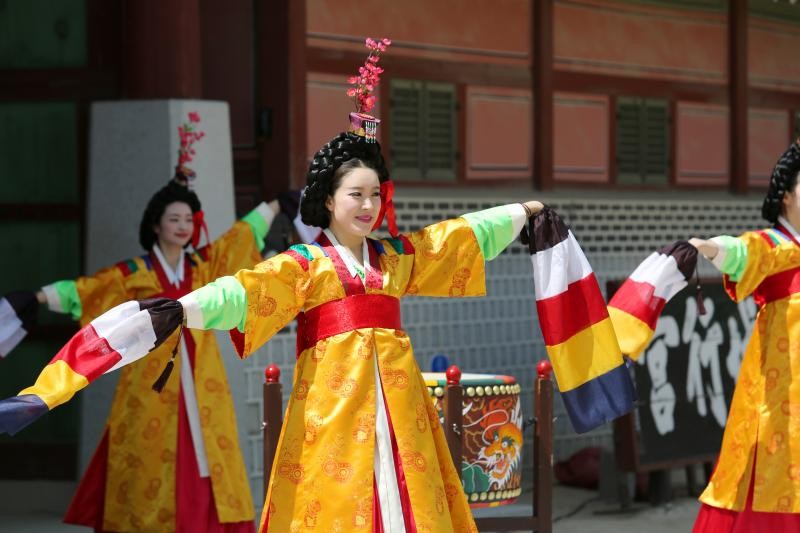 |
| Photo courtesy of Suwon Cultural Foundation |
An alternative, if you don’t want to walk a lot, is the Hwaseong Haenggung Palace, which served as the King’s temporary palace. You can enjoy a variety of performances here, including one by 24 Martial Arts Trial group, a ceremony by the king’s guard and others every Saturday. The 24 Martial Arts show, conducted every Tuesday to Sunday at 11 a.m., is one you shouldn’t miss.
On Sundays, Hwaseong Haenggung Palace hosts military ceremonies, performed by the King’s Guard, traditional games, tightrope walking, plate spinning and an appearance by “King Jeonjo” on his visit to his temporary palace. An actor playing the role of King Jeonjo may extend his hand for a handshake, so be ready to get a photo.
The Banghwa Suryu-jeong (North-East Pavilion) with its serene pond, is another great stop to relax for a moment during your stroll. No matter where you go in the sprawling grounds of this fortress, each area has its own unique charm and things to do and see. Access to the fortress is easy from the Maesan Market bus stops.
The truth is Suwon has something for everyone, from amazing architecture to food and culture. And, the great part is that it doesn’t require a lot of money to enjoy them all.
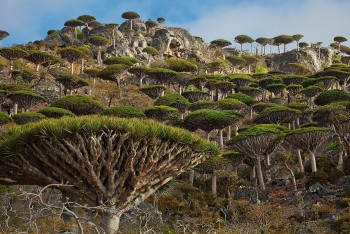 | Isolated Socotra - Discover The Strangest Alien – Like Place in The World This strange, unique island is like no where else you have ever seen, with umbrella-shaped trees, weird plants and flowers, and the mesmerizing sand dunes. ... |
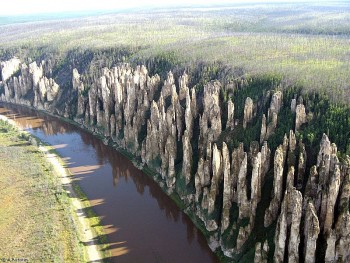 | Lena Stone Pillars – The Extraodrinary 500-Year-Old Forest In Russia Lena Pillars is a geological formation and nature park of the same name located on the banks of the Lena River in Yakutia, with big ... |
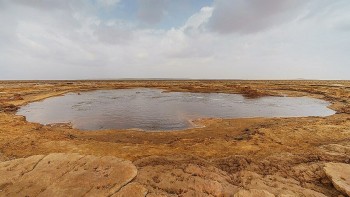 | Gaet’ale Pond – The Saltiest Body of Water on Earth Located near the Dallol crater in Ethiopia’s Danakil Depression is Gaet’ale Pond, a famous tourism attraction and is also the saltiest body of water on ... |
Recommended
 Handbook
Handbook
Vietnam Moves Up 8 Places In World Happiness Index
 Handbook
Handbook
Travelling Vietnam Through French Artist's Children Book
 Multimedia
Multimedia
Vietnamese Turmeric Fish among Best Asian Dishes: TasteAtlas
 Handbook
Handbook
From Lost to Found: German Tourist Thanks Vietnamese Police for Returning His Bag
Popular article
 Handbook
Handbook
Prediction and Resolution for the Disasters of Humanity
 Handbook
Handbook
16 French Films To Be Shown For Free During Tet Holiday In Vietnam
 Handbook
Handbook
Unique Cultural and Religious Activities to Welcome Year of the Snake
 Handbook
Handbook






